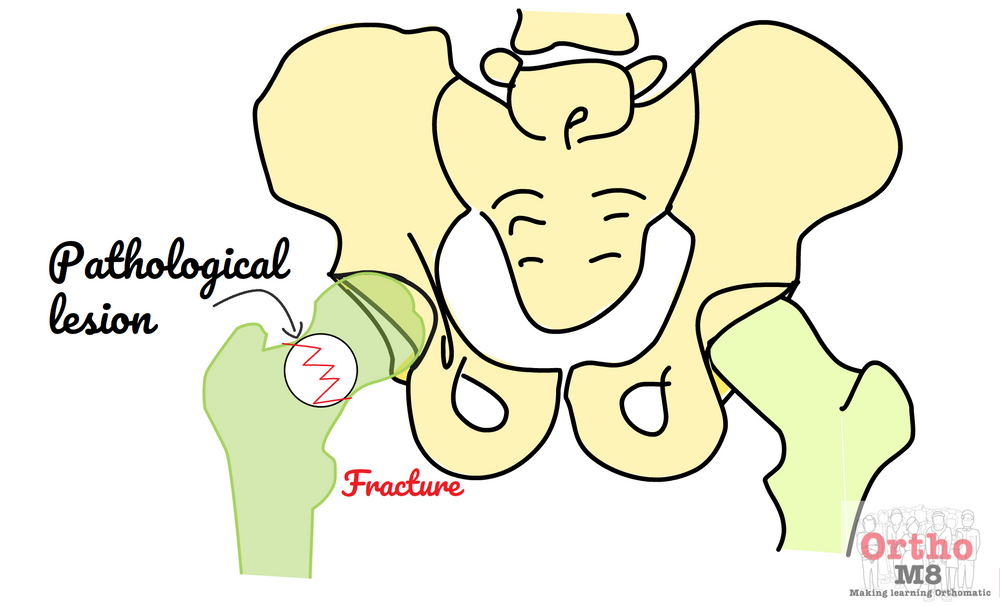Pathological fractures can occur anywhere in the hip. They can be intracapsular, extracapsular, pertrochanteric or even subtrochanteric.
The are defined as a fracture occurring in "weak" bone. i.e. A fracture that would not occur in normal bone.

There are often clues in the history that make you suspicious even before you have seen the radiograph.
- Gradual onset of pain in hip
- Weight loss, Night sweats, loss of appetite
- History of cancer
- etc.
Pathological fractures must be treated differently to fractures occurring as a result of osteoporosis or high energy in young patients.
The first step is recognition, followed by investigation then management.
Investigation involves a multidisciplinary approach to answer the following questions:
- Is it a primary lesion or a secondary lesion?
- Is it an isolated lesion or part of multiple metastases
History and examination should provide some clues but investigations to stage locally and distally are needed.
This starts with simple investigations such as blood tests for tumour markers.
Local staging often involves a radiograph of the whole bone and further imaging in the form of an MRI or CT Scan.
Distal staging involves a CT Chest/Abdo/Pelvis to search for other lesions. This often reveals a primary lesion.
The most common cancers that metastase to bone are the following:
- Breast
- Bowel
- Lung
- Thyroid
- Renal
- Prostate
Once the investigations have concluded a multidisciplinary approach is required.
The multidisciplinary team includes an Oncologist in order to determine prognosis as well as discussions with Surgeons experienced in the management of pathological lesions.
Does this require biopsy?
This is usually in a Bone tumour unit. Depending on the type of lesion and prognosis the treatment can vary from palliative management to curative management.

